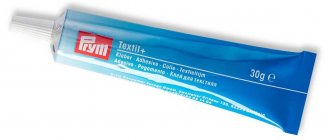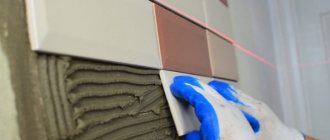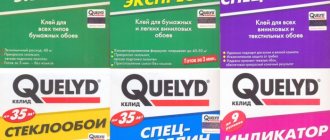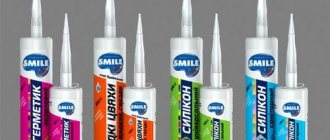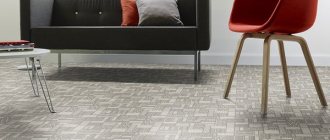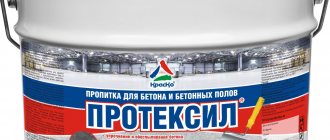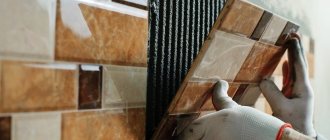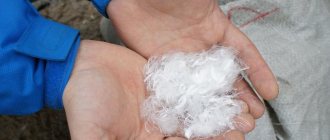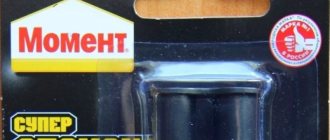What it is
The main substance of this type of glue is epoxy resin, which is a synthetic oligomer that cannot be used in its pure form. Each manufacturer's liquid two-component epoxy glue can be presented in different consistencies - liquid or solid, and differs in shade from honey color to dark tones. The two main components of epoxy adhesive are resin and hardeners, which give it adhesive properties. Hardeners can be polyethylene, polyamine, anhydride, triethylenetetramine. It is this tandem that forms a particularly strong polymer structure.
Important! When a chemical polymerization reaction occurs during the interaction of the oxide with the hardener, the molecules of the materials being fixed are reliably connected, and after hardening, the seam becomes resistant to external mechanical influences and the influence of chemicals.
What is epoxy, application instructions
The main polymer of the epoxy adhesive mass is a resinous substance. Resin (epoxy) has technical characteristics similar to glue and is sold together with a hardener. The scope of application of epoxy is similar to glue - agriculture and industry, therefore it is sold as an independent adhesive material. Also, the production instructions “How to use epoxy resin” indicate that it is suitable for pouring floors, making mosaics, design creativity and preparing building mixtures.
Properties and applications
Epoxy resin based adhesive has gained immense popularity due to its properties:
- The seam does not shrink during operation and cracks do not form on it.
- Provides good adhesion to different substrates and materials.
- Resistant to chemicals: oils, alkalis, solvents.
- Frost resistance down to -20 °C.
- Heat resistance up to +250°C.
- Resistance to mechanical stress.
- High elasticity of the seam.
- The finished adhesive joint can be varnished or painted.
- It is not a conductor of electric current.
- The curing speed is not determined by the thickness of the adhesive layer.
- Other components can be added to the composition if necessary.
- Good wear resistance, weather resistance and moisture resistance.
Advice! To change the color of the epoxy mixture, you can add other components and fillers, which will also help improve its properties. If you choose an aluminum additive, you can increase the strength of the composition, as well as thermal conductivity.
But epoxy glue has several negative qualities. For example, the setting speed, which is very reduced compared to other existing types. In a short period of time, you need not only to apply the composition, but also to fix it, have time to remove excess mixture, clean the work surface, hands or other materials.
If the glue has time to harden, it can only be removed mechanically. Epoxy glue is not suitable for gluing materials and surfaces that come into contact with food. It will also be impossible for them to glue Teflon, nickel, silicone, zinc, chrome and polyethylene surfaces. Soft materials will begin to deteriorate over time under the influence of the resins in the epoxy adhesive.
Numerous positive properties of epoxy adhesive allow it to be used in completely different industries, industries and areas:
- Construction.
- Automotive industry.
- Shipbuilding.
- Aircraft production.
- To solve everyday problems.
- In needlework.
One-component and two-component adhesives
Based on the number of components, adhesive solutions are divided into:
- one-component;
- two-component.
One-component formulations are supplied for sale ready-to-use in a single package.
The delivery set of two-component adhesives for plastic includes two packages of their components. Before gluing the product, they must be mixed according to the manufacturer's instructions.
An example of a one-component adhesive is instant Cosmoplast 500, intended for gluing profiles in window production. It can be used in both manual and industrial production.
The long-known epoxy adhesive for plastics is a two-component one. One of its components is epoxy resin, the second is a hardener. Unlike one-component solutions, two-component solutions have a longer shelf life: after all, until their components come into contact, curing does not occur.
Specifications
Epoxy glue is a synthetic substance that contains hardeners, fillers, solvents, plasticizers, and modifiers. After its application, an irreversible chemical reaction begins, which contributes to the formation of a very durable material.
Note! Repair and construction work using epoxy adhesive must be carried out at a temperature of +10 °C. Depending on environmental conditions, as well as the composition and manufacturer, complete hardening can occur within a period of 3 hours to three days.
According to GOST 12.1 007-76, epoxy adhesive has a hazard class of 3. It is a low-hazard irritant that can cause allergies on human skin. It poses a threat and danger to the environment and is considered toxic when released into ponds and other bodies of water.
Main characteristics:
- The suitability of the prepared composition varies from 5 to 120 minutes, depending on the manufacturer.
- Tensile strength 100-400 kgf/cm².
- Density on average 137 t/m³.
- Elasticity upon impact and displacement of the seam is 1000-2000 MPa.
Although the finished epoxy adhesive joint does not react to chemicals and acids, it can be destroyed using acetone and toluene.
On sale you can find epoxy glue of different volumes and weights, as well as containers.
There are these types:
- Syringes are available in 6 or 25 ml, convenient to use at home.
- Containers from 140 to 1000 g, have a shelf life of up to 2 hours, and are considered universal.
- Quick-curing mixtures are available in tubes of 45-70 ml, also in buckets of 250-500 g.
- Barrels of 15, 19 kg - the composition is produced for industrial use.
This is interesting! Universal liquid epoxy adhesive has a white, transparent or slightly yellow tint. There are special types that are available for metal, gray, silver or brown. You can even find flexible pink glue.
Advantages and disadvantages
Epoxy has a number of positive characteristics, thanks to which it continues to lead among analogues. Here are the advantages of glue:
- elastic seam - the presence of slight mobility of the adhesive joint will prevent the appearance of cracks and prevent destruction;
- the ability to withstand temperature fluctuations - the product is heat-resistant, the finished product can be used at temperatures up to +250 degrees (some adhesives are even higher temperature);
- no harm from low temperatures - the adhesive joint is frost-resistant, does not lose strength characteristics even at -30 degrees, this allows the material to be used for outdoor work;
- moisture resistance - epoxy adhesive is waterproof and does not react to water or water vapor during operation;
- suitability for gluing most known materials - the glue is truly universal, suitable for almost any surface;
- short drying time - after application, the parts quickly become a single whole, and after final polymerization it is almost impossible to peel them off.
Despite the high quality and ultra-strong composition of the product, it has a number of disadvantages. Here they are:
- Do not use the mixture for gluing objects in contact with food, this will harm the body and may cause poisoning;
- the instructions prohibit gluing silicone, polyethylene, Teflon with the product; these materials will be destroyed by the action of the resin, the glue can even partially dissolve them;
- the glue has too high a hardening speed, and a novice master may not have time to cope with the task;
- wiping the product off the surface is very problematic; it will have to be cleaned immediately, before it hardens;
- In case of contact with skin, there is a risk of developing an allergy or getting a burn; you should only work with gloves.
Kinds
All existing types of epoxy glue can be divided into several categories. Depending on the number of components, these are one-component compositions and two-component mixtures. The first group does not require preparation before starting work; it is already completely ready for use. Curing can occur at room conditions or at elevated temperatures. Two-component solutions are more in demand. Before gluing, the two components must be mixed. The result is a very flexible, monolithic and durable seam.
Depending on the density of the mass, liquid and clay-like substances are distinguished. Viscosity is determined by the consistency of the epoxy resin. Liquid glue is heated before use and is easier to apply. The clay-like composition resembles plasticine in structure and is produced in the form of bars of different sizes. Before starting work, the mixture is thoroughly kneaded and distributed in an even layer over the surface to be glued.
Depending on the polymerization method, the glue is divided into several types. The classification depends on the hardener used. For example, an anhydride and a polyamine allow the mixture to polymerize under standard conditions. The degree of heating of the seam also influences.
Types of adhesives
There are many types of plastic products and they are widely used in everyday life, so gluing plastic can be done with a wide range of adhesives and different methods.
One of the gluing methods is to soften the surfaces of the parts to be glued with a suitable solvent (dichloroethane for plexiglass or polystyrene); after joining, the seam is securely soldered. In a similar way, you can make your own glue by dissolving small plastic shavings.
Types of good adhesives for plastics (click to enlarge)
Liquid
Popular household adhesives are easy to use and come in two types: solvent-based or water-based. The principle of operation of the first is as follows: water or solvent evaporates from the glue applied to the top of the plastic parts, the adhesive seam dries with further hardening, due to this the parts hold tightly.
Such adhesives can glue plastic with porous materials that allow air to pass through, otherwise the water and solvent will not evaporate and the glue will not harden.
In everyday life and industry, good liquid PVA glue is known, widely used in furniture production for reliable gluing of artificial films on wooden surfaces; in the construction field, linoleum is often glued to PVA. Other liquid adhesives are made on the basis of rubber resins, in this case the solvents are methyl acetate, alcohol, and acetone.
Contact
The name was given because of the gluing principle: before gluing plastic to plastic, the surfaces of both glued products are coated with glue and after 10 - 15 minutes they are firmly pressed against each other. There are two types: with hardener and without hardener, the best known brands are BF-2(4), “Moment”, rubber glue.
In the video you will learn how to use contact adhesives:
Adhesives contain toxic materials, so at home, before gluing plastic, it is necessary to ensure the room is ventilated.
Reaction adhesives
There are one-component and two-component types. The former, when applied to the surface to be bonded, harden very quickly from interaction with oxygen or water vapor. These types include the well-known “Secunda”, “Superglue” and other analogues that can be sealed to form a rigid and durable seam.
Two-component ones have a hardener and a fixer that are located separately from each other. Before being used for gluing, they are combined and, after being applied to the surfaces to be bonded, under the influence of environmental conditions, they gradually begin to harden and glue the parts. They are based on various resins, the most famous types being polyurethane, epoxy, and polyester.
Hot melt adhesives
A separate type of adhesive that acquires its adhesive properties at high temperatures. To do this, the glue is placed in a special gun, where it is heated to 110 -120 C, then hot glue is applied to the plastic for gluing.
Watch the video to learn more about the gluing process:
Before tightly gluing plastic, it is necessary to establish its type using markings, comparing properties with descriptions, or physical experiments (combustion, solubility). Afterwards, it should not be difficult to purchase suitable glue for plastic and make reliable gluing with your own hands, following the instructions.
Before you figure out how to glue plastic, it should be noted that all plastics, regardless of their polarity, surface treatment method and chemical composition, can be successfully glued.
For example, a child’s toy breaks or a car part is damaged. To list all the areas in which plastic bonding is used, you need to talk about all the products made from this material.
Plastic is a complex organic compound made from polymers. To glue parts, it is necessary to use only high-quality mixtures. The market today offers a large assortment of products from different brands; to choose suitable adhesives for plastic, it is better to consult with knowledgeable people, and also carefully study the information in the instructions for the product.
The list of the most popular adhesives for plastics includes the following products:
· Moment;
· Strong Plast;
· WEICON constraction;
· AKFIX glue, and others.
How to glue plastic: tips for improving the quality of the connection
Joints made using cold-curing adhesives may not be strong enough. This has a particularly negative effect on material that is used in conditions of elevated temperatures or high humidity. The heating method will help improve the quality of gluing and thus expand the range of adhesives for plastic. In such cases, the strongest possible connection can be achieved with epoxy and polyurethane glue; phenol-polyvinyl acetal compositions, for example, BF, 0T, BC, BC-350, are also well suited for this.
Thermosetting adhesive compositions perfectly bond plastics based on thermosetting polymers, such as polyurethanes, polyesters, epoxies and other materials. For these plastics, in addition to the mixtures listed, furan and cyanoacrylate compositions, as well as glue containing synthetic rubber, are suitable.
To have a good understanding of the question of how to glue plastic, you also need to know that the quality of the connection of some thermoplastic materials improves when using ultrasound. Today, a method has been developed that allows polymer surfaces to be modified before gluing by irradiation with UV rays or halogens.
How to glue plastic: instructions for use
First, make sure that the surfaces to be treated are dry and clean. The edges of the parts must be adjusted to each other as accurately as possible. Next, glue is applied, and you need to make sure that the cuts from it soften over the entire surface and to the maximum depth. When working, it is better to use a brush or a syringe; you can use the spray method, or apply the product by immersing parts.
Further, in order to ensure a high-quality connection, both parts to be joined are kept under pressure; the exposure must be sufficient and carried out until a solid layer of glue is formed. Only after achieving maximum strength can you perform machining or finishing of the part.
How to glue plastic, how to do it so that the parts do not fall apart during use? To ensure a strong connection, a method of reinforcing plastic using special materials that are glued or melted with solvents or glue is often used. There are known methods for joining thermoplastics using plasma treatment, or by applying a layer of metal ground to a powdery mass on a heated surface (in such cases, cast iron or steel filings are used).
If you cannot figure out which one is in front of you on your own, it is better to use universal glue. It is suitable for joining any type; however, its quality is often lower than that of special adhesives.
Gluing plastic is a very common way of creating a permanent connection between structural parts using glue. Before answering the question: how to glue plastic, you should familiarize yourself with the features of this material.
The strength of the connection depends on several factors:
- properties of the plastic to be bonded (wettability, solubility, structure, molecular polarity, degree of modification and surface condition);
- properties of the adhesive (cohesive strength, structure and polarity of macromolecules, rheological properties, wetting ability);
- technological and design parameters.
Based on their tendency to stick together, plastics are divided into several groups:
- easily glued
, which do not require special effort and expense for surface preparation (polyacrylates, ABS plastics, unplasticized polyvinyl chloride, aminoplasts, etc.); - conditionally easily glued
, requiring the use of special adhesives (polystyrene, plasticized PVC, polyamides, etc.); - difficult to glue
(impact-resistant polystyrene, polypropylene, some types of thermosets based on organosilicon resins, fluoroplastic, polyethylene). This group of plastics requires special preparation of the bonded surfaces.
Various modifiers, dyes, antistatic agents and other additives are always added to the composition of industrial polymers. All of them affect the adhesive properties of the material, so in each specific case the adhesive ability of the plastic is assessed. Only after obtaining the result can you decide which glue to use to glue the plastic of one or another modification.
Consumption
Having decided on the appropriate type of glue, you need to learn not only how to properly prepare this or that composition, but also determine its consumption. This indicator is determined by the thickness of the adhesive layer. On average, 1.1 kg of epoxy glue is used per 1 m² if the thickness is 1 mm. If work is done on porous surfaces, such as concrete, then the consumption will be significantly higher due to existing unevenness. There will be greater consumption when working with wood and wooden surfaces. When working with cracks, 1.1 g per 1 cm³ is consumed.
What temperature and load can it withstand?
The product, glued with epoxy, can withstand any vibration loads without problems. The bonding area has high impact strength and is therefore not damaged even by strong impacts.
This resin is excellent for use at high and low temperatures. Operating temperatures range from -100 to +150 degrees. In this case, the solution tolerates sudden temperature changes of more than 50 degrees. This allows you to use epoxy to secure products that are installed in freezers or fireplaces with critical temperatures.
Stamps
It is best to choose these 4 types of glue with quality characteristics:
- "Cold welding".
- EDP.
- "Contact".
- Glue "Moment" Epoxylin.
It is possible to determine which manufacturer will be better only experimentally and taking into account the main purpose and characteristics of the varieties.
“Cold welding” is produced by such manufacturers as Akapol, the Russian “Astat”, the “Anles” brand, and the Runway trademark. The epoxy composition EDP is suitable for working with various materials, produced by domestic companies, JSC Anles, LLC Ekoclass, Khimkontakt. Epoxy mortar “Moment” from the manufacturer Henkel is very popular, and the domestic one has also proven itself well. “Contact” allows you to work even with wet surfaces.
On video: EAF epoxy resin, tricks of use.
Popular manufacturers
Many construction brands produce universal and specialized epoxy compounds. The most common and effective epoxy adhesives for wood, plastic, metal and concrete include:
- "Moment";
- "Contact";
- "Super grip";
- "Class" and "Bison";
- “Novocolor universal epoxy glue”;
- "Second";
- "EDP";
- "Compound K-153";
- DoneDeal "Epoxy Adhesive" in the form of a syringe.
How long does it take to dry?
It is not possible to immediately determine how long epoxy glue dries. The drying process is influenced by many factors, including ambient temperature, the ratio of the main components in the composition, and the influence of additional factors. For example, mixing epoxy resin with a higher proportion of hardener will speed up the drying process. Also, with additional heating, the hardening speed increases after the glue sets. In order for the glue to dry faster and the drying time to be reduced, the temperature should be increased as much as possible. Complete hardening is determined depending on the type of glue. "Cold weld" can cure in 5-20 minutes. There is also an epoxy universal class of glue such as EDP, which thickens in an hour, regardless of the actions taken, sets after 2 hours, and completely hardens after a day.
Advice! If, after application, the epoxy adhesive does not polymerize within the period specified by the manufacturer, then two reasons can serve as an explanation for this: either the composition is expired and has therefore lost its properties, or the proportions during its manufacture were not met. It is necessary to check two indicators and re-mix the epoxy adhesive components.
Review of common brands
Universal epoxy adhesive EDP has been widely popular since Soviet times.
Common EDP glue (click to enlarge)
The two-component composition, according to the description, is characterized by high strength and low shrinkage in operation, and does not lose its qualities from exposure to moisture. It is usually used to repair furniture and plastic parts of household appliances. EDP epoxy glue is indispensable for restoring a car headlight or bumper. EDP brand products are available in packages with different volumes.
Adhesive from the Spanish manufacturer Moment Super Epoxy Metal, as the name suggests, is intended for joining metal parts. For this purpose, you can use domestic adhesive plasticine Contact “cold welding”, which has gained particular popularity among car enthusiasts due to the possibility of emergency repair of a gas tank.
From the video you will learn more:
How to store
Despite the temperature that epoxy glue can withstand under operating conditions, it must be stored under completely different conditions. Manufacturers recommend doing this at room temperature between 20 and 25 °C in a dry place. The packaging must be in a vertical position, without compromising its integrity. If the packaging is damaged and the glue comes into contact with air during storage, its properties will deteriorate significantly. Do not store the material in direct sunlight and keep it out of reach of children. Epoxy glue should be stored separately from food and utensils.
The shelf life of the adhesive composition varies from 1 to 3 years for each manufacturer individually. The main ingredients of the mixture will retain their qualities even after the expiration date, slightly reducing the quality indicators.
Adhesive for polypropylene
For gluing polypropylene, you can use two-component structural adhesive WEICON Easy-Mix PE-PP. By the way, they can also glue polyethylene. The basis of this brand of glue is methyl acrylate. The cost of 50 milliliters of this product is 50 euros.
Today you don’t have to rack your brains over the question: how to glue pp plastic without much hassle. Dubfix recently introduced its new product - transparent double-sided adhesive tape designed for repairing polypropylene products. The manufacturer claims that the use of such a tape can replace the operation of welding polymers, while ensuring high joint strength. The tape is supplied in rolls 25.4 meters long. The cost ranges from 90 to 112 rubles per piece.
How to wash
If during application the epoxy composition comes into contact with the skin, you can clean it with a soap solution. If it hardens, you can use acetone to wipe off the stain. Liquid vegetable oils are also used for these purposes, which soften the adhesive composition and help it peel off from the skin more easily.
There are several options for removing the epoxy composition after hardening and curing:
- Freezing spots. You can use a special aerosol coolant, which makes the epoxy adhesive structure brittle after hardening.
- Mechanical method. You can choose to scrape the epoxy off the surface using a putty knife or a dull knife. Scraping can be carried out on surfaces that are scratch resistant and hard in nature. For this you can use any metal tool.
- Heating. When applied, temperatures above those recommended for use will soften the epoxy mixture. An iron and a household hair dryer are used for this. After softening, the composition is easily removed with a spatula.
- Use of chemical solvents. Also suitable for strong, wear-resistant materials used for gluing, which are not affected by thinners. For this you can use ethyl alcohol, acetone, aniline, butyl acetate, toluene.
Since almost any surface can be glued with epoxy glue, they also need to be properly cleaned of residues of the substance. You can remove epoxy residue from mirrors or glass with acetic acid or solvents.
Adhesive for HPL plastic
For gluing high pressure HPL, a two-component adhesive is used. It consists of synthetic rubber and a solvent (highly volatile). In this way, HPL can be glued even to sanded particle boards. One of the widely used brands of glue for HPL is OLMI 4745. The cost of contact adhesives for plastic is approximately 200 rubles per 50 milliliters.
Despite the fact that the technology for joining different types of plastics has been well developed in the world, and there is no shortage of necessary adhesive materials for this purpose on the market, the future probably still lies with ultrasonic soldering. This is the most progressive method, during which the connection of plastic elements occurs due to the energy released by the material under the influence of ultrasound.
Since plastic objects often break, the question often arises of how to glue the plastic tightly together, restoring its shape and integrity.
. There are various universal adhesives on sale, the use of which for gluing plastic does not always lead to the expected result. After gluing, the plastic sometimes loses its shape or breaks again in the same place. However, for each type of plastic there are reliable means that can permanently connect the fracture sites. You just need to choose the right glue and then success is guaranteed.
So, in order to tightly glue plastic, you need, first of all, to determine its type and only then select the glue for it. Here it would be possible to present in detail a lot of information about the production of plastics and their chemical composition, but in practical life this will be of little help. If you just need to glue two parts of a plastic object, then it is not necessary to understand the difference in the composition of unplasticized polyvinyl chloride and thermoset plastic with silicone resin. However, the composition still plays a key role in the strong bonding of plastics. How can we be here? Yes, just add this page to your bookmarks and use it as a reference.
The easiest way to determine how to glue plastic tightly together is by the special markings that are found on almost every plastic item or its packaging. Typically the marking is made in the form of a triangle with a number or letters in the middle. Often the letters are located below the triangle. This is a recycling sign to make it known how to sort waste. This icon will be a hint about the composition of the plastic. The numbers and letters correspond to the following types of plastic:
Sometimes there are other designations:
- ABS – acrylonitrile butadiene styrene;
- PA66 – polyamide;
- PC – polycarbonate;
- PUR – polyurethane;
- PMMA – polymethyl methacrylate.
Next, you need to take into account that gluing some types of plastic is based on dissolving the edges of the surfaces being glued, while others are based on creating a layer of a fastening substance. Without creating such a layer, it is impossible, for example, to combine plastic with other materials - metal, wood, and so on. Therefore, to choose the right glue, you need to pay attention to the letters that are usually located on the glue package. Often the names of plastics are directly indicated on the glue packaging, but sometimes their types are indicated by letters. That is, simply put, in order to firmly glue the plastic together, you need to act according to the following plan:
- determine the type of plastic by the letters on the packaging;
- choose glue with the same letters on the packaging;
- glue the item according to the glue instructions.
The easiest way to glue is ABS plastics, most types of PVC, and aminoplasts.
The most difficult ones are polyethylene, polypropylene, polystyrene, fluoroplastic. In difficult cases, two-component adhesives are used, an example of which is the popular epoxy resin. Such adhesives form a strong shell that adheres to the surfaces that need to be glued. General rules for gluing various plastics are:
- cleaning surfaces from dirt and grease;
- drying to remove moisture;
- compression during gluing;
- time delay for completion of processes.
When using two-component adhesives, you need to patiently wait for the mixture to completely harden according to the instructions, and at low temperatures this time increases.
Plastics have become a part of our lives. In many cases, plastic parts turn out to be more convenient, lighter, cheaper, and sometimes stronger than metal ones. But nothing lasts forever. Of course, a broken part is easiest to replace. And if this is not possible, it makes sense to try to repair it.
It is most often recommended to repair broken plastic parts by welding. High-quality welding produces a durable, and after appropriate processing, an almost invisible seam.
Unfortunately, welding is not always applicable. A significant part of plastics used in industry are thermosets and cannot be welded in principle. It is very difficult to weld thin plastic parts of complex shapes, which easily warp when heated. And in general, performing good welding is not easy. If you heat it up a little, the seam will become brittle; if you overheat it a little, the plastic of the part will begin to deteriorate.
Therefore, at home, it is more advisable to glue
. We will consider all stages of work using the example of one of the plastic parts of the interior lining of a car.
The edge of the thin plastic plate through which the part was attached to the body was broken off. The thickness of the plate is about a millimeter. Welding was immediately eliminated, since when heated to the melting temperature, the thin plate would inevitably warp. Let's try to glue it together!
The plastics used to make parts are extremely diverse. The industry uses several dozen different types of plastics, each of which has its own physical and chemical properties. Therefore, before starting repairs, you should determine the type of plastic from which the part is made.
How to determine the type of plastic?
If the size is not too small, then it is enough to inspect it carefully. Somewhere in a secluded place on the inside you will definitely find several letters - the part material code
. The date of manufacture may be indicated next to it, and for vehicle parts, the part number according to the spare parts catalogue.
If the part is imported, then the designation will most likely be placed inside or next to the recycling code - a triangle of three arrows closed on each other.
Plastic letter codes are standardized. The most common:
ABS
— acrylonitrile butadiene styrene (a very widespread material, especially for large parts of the external and internal decoration of cars, housings of household appliances, toys)
PA
— polyamide (due to wear resistance, especially with the addition of graphite, talc, fiberglass, oil, it is widely used for the manufacture of rubbing parts and gears of gearboxes)
PC
— polycarbonate (a transparent polymer used in the manufacture of lenses, compact discs, headlight lenses and flashlights; cellular polycarbonate is also widely used in the form of sheets with a cellular structure)
P.E.
- polyethylene (packaging film, boxes, cans, garden tools, water and sewer pipes, toys)
PP
— polypropylene (packaging film, bags, sewer pipes, disposable tableware)
PUR
— polyurethane (shoe soles, shock absorber bumpers, other elastic parts with high wear resistance)
Other symbols can be found in the complete list of symbols for technical plastics according to ISO 1043-1.
There are also combined types. For example, the part being repaired was marked ABS+PC
.
A mixture of ABS plastic and polycarbonate is widely used for the manufacture of car parts, so there is no mistake.
What kind of plastic can be glued?
An industrial production engineer will tell you that any plastic can be glued together. But he will also say that plastics are divided into three groups:
— easy to glue
requiring minimal surface preparation: ABS plastic (ABS, MABS), polyacrylate (PAK), polycarbonate (PC), cellulose-based plastics (CA, CAB, CAP, CN, CP, STA), unplasticized polyvinyl chloride (PVC-U) , epoxy resin-based plastics (EP)
— conditionally easy to glue
, requiring minimal surface preparation and the choice of special glue or primer: some types of polyamide without fillers (PA), polystyrene (PS), plasticized polyvinyl chloride (PVC, PVC-C), polyester plastics (PEEK, PEEST, PEI, REC, PESU, PEUR )
— difficult to glue
requiring special physical and chemical surface preparation: polyformaldehyde (CF, FF, MF, PF, UF), impact-resistant polystyrene (PS-HE), polypropylene (PP), polyethylene (PE), polyamides (PA)
At home, it makes sense to repair parts made of plastics of the first and, sometimes, second group. For example, polystyrene glues perfectly if you use glue based on dichloroethane or toluene (glue for plastic models).
The repaired part, made from a mixture of ABS plastic and polycarbonate, also belongs to the group of easy-to-glue parts and sticks well with almost any universal glue. In this case, maximum strength of the seam will be provided by EDP epoxy glue produced in Dzerzhinsk.
The glue is prepared in accordance with the instructions (10-12 parts of hardener per 100 parts of resin). It is very convenient to mix epoxy resin in a disposable polypropylene cup. Epoxy has very weak adhesion to polypropylene, so frozen residues from the glass are easily removed. And it wouldn’t be a shame to throw away such a glass either.
How to prepare surfaces for gluing?
When preparing plastic parts for gluing, it is best to follow the gluing instructions included with the adhesive. In general, preparation consists of cleaning
surfaces with fine sandpaper and
degreasing
with an organic solvent. For plastics, it is better to use ethyl alcohol, since some plastics may dissolve or swell in gasoline or acetone, which will reduce the strength of the adhesive seam.
Epoxy glue is applied in a thin layer to one or both surfaces to be glued, the parts are aligned and fixed. Unlike contact adhesives, epoxy resin does not require strong pressure; the joint can be secured by holding the parts with thread, rubber bands or clothespins. After 1-2 hours, the fixing devices should be removed
. Firstly, tearing them off later will be much more problematic. And secondly, the final polymerization of epoxy resin without external pressure will not allow internal stresses to form in the seam.
Cooking instructions
You need to prepare in advance a suitable tool for applying glue, as well as a container for mixing the compositions. Disposable tableware is suitable for these purposes.
How to cook
The instructions for using epoxy glue are quite simple. It is enough to use the manufacturer’s recommendations on the packaging to mix the ingredients correctly and in the right proportions. As a rule, manufacturers of two-component compositions will indicate how to properly dilute the epoxy mixture with your own hands.
Ratio norms
Each manufacturer may have its own standards, but most often this ratio is 1 to 10. Where 1 is the share of the hardener, and 10 parts are epoxy resin.
How to dilute and make it more liquid
To dilute the resin and make it more liquid, to facilitate the process of mixing the components, it is necessary to heat it on a radiator or water bath at a temperature of 50-60°C. After this, fill the syringe without a needle with molten resin and add it to the mixing container. Add the hardener there in the required proportion for dilution, mix vigorously until a homogeneous mass is obtained.
How to achieve the desired and transparent color
You can dilute the glue with the following components:
- Asbestos. You can also increase the heat resistance and hardness of the consistency.
- Titanium dioxide will help make the solution white.
- Iron oxide. Will make the glue red and fire resistant, increase heat resistance and thermal conductivity.
- Silica. Eliminates the viscosity of the composition and makes it more durable.
- Soot. It will help you get black glue.
- Aluminium oxide. It will also make the glue stronger and turn it into a dielectric.
To increase the volume of the glue, you can mix it with sawdust or fiberglass. This will allow you to fill large openings, cracks and voids, but at the same time save composition.
Adhesive for ABS plastic
Thermoplastic ternary copolymer of three components: acrylonitrile, butadiene and styrene (ABS) is best glued with a one-component polyurethane adhesive and sealant. Sometimes two-component compositions based on the same polyurethane are used for this purpose. One of these adhesives is SUPER NN, costing 299 rubles per liter bottle.
Among the new developments, TAMIYA CEMENT for ABC worth 168 rubles can be noted. For this price you can buy a small bottle of 40 ml.
Instructions for using epoxy glue
To glue surfaces, you need not only to prepare the glue, but also the base, then apply the composition correctly and wait the required period for it to completely harden.
Preparing the adhesive and base
One-component compositions do not require preliminary preparation; in some cases they can be warmed to room temperature to increase fluidity.
1.After preparing all additional tools, materials and the workplace itself, you need to start processing the surfaces to be glued. To ensure better adhesion, you can clean the material from dirt, degrease, sand and dry.
2.When it is necessary to connect two parts or glue an element to a surface, apply glue to only one of the objects.
3. Then press it against the other and fix it.
4.You need to hold them for about ten minutes.
5.After this you need to leave it to harden. This will take about a day. Do not forget to ventilate the room in which you worked with epoxy.
How to dilute glue and use it for installation
Factory-made liquid formulations do not require additional addition of polymers and solvents. Dilution will only be required for two-component and plastic species. Instructions on how to dilute two-component epoxy adhesive are indicated on the packaging and include the following points.
Preparation for installation:
- prepare a container (can be disposable) and a spatula (spatula, stick, any convenient tool for stirring);
- Wear rubber gloves and work clothes to limit skin contact with the chemical. If you plan to work with a large volume of glue, wear a special construction mask to protect the upper respiratory tract from toxic fumes.
Appearance of polymers for dilution Source polymerika.ru
Advice from professionals
After the preparation of epoxy adhesive is completed, the stage of gluing bases and materials begins. Glue is applied to only one of the surfaces to be glued, after which they are pressed against each other with force and fixed for 10 minutes in a stationary state. If excess mortar appears on the seams, you must immediately remove it with a napkin. It is necessary to wait until the resin to hardener ratio is completely cured. Therefore, during this period the products must not be used, loaded or subjected to mechanical stress.
Epoxy glue (2 videos)
Types and uses of epoxy glue (17 photos)
Mold filler
Resin is good for casting in molds, as shown in the photo. Parts obtained using this method can be machined. The rules by which the mixture is prepared in this case are identical to the rules already described above:
- In this form, glue is often used, for example, by aircraft modellers;
- To give the product any color, various dyes are added to the resin, as shown in the photo;
- And to make it as plastic as possible - plasticizers.
The following are used as fillers for epoxy resins:
- powders;
- textiles of synthetic origin;
- glass fiber;
- and other substances.
Let's sum it up
Epoxy glue is a substance whose properties many have heard of. However, the features of the application and characteristics of such glue are not known to many. With its help you can achieve a high-quality and durable connection. However, to prepare the substance you will need to follow the rules described above.
Bonding technology
A good result is obtained if the surface is properly prepared for applying glue. Therefore, you need to understand the features of different bases. Wooden, plastic and metal elements are most often glued; working with them will be described in more detail below.
A good result is obtained if the surface is properly prepared for applying glue.
Plastic
It is possible to glue many types of plastic at home, but you should not use polypropylene and formaldehyde types. First, plastic of an easily glued type is prepared, improving adhesion; sandpaper treatment is required. After the base is degreased, it is permissible to use only ethyl alcohol. When the layer is applied, a load is created on the object in order to obtain a good fixation; the load can be removed in an hour and a half.
When the layer is applied, it creates a load on the object to get a good hold.
Tree
The wood needs to be cleaned of dirt, after which the composition can be applied. The tool you can use is a spatula or a brush. The adhesive layer is applied evenly, the parts are pressed and left until completely hardened.
The parts are pressed and left until completely hardened.
Metal
The metal must be well cleaned in advance, greasy stains must also be removed in order to obtain high-quality adhesion. Well, then using a convenient method, apply glue to the surface and connect them according to the scheme described above. Act carefully; it will be difficult to remove a frozen stain.
Act carefully; it will be difficult to remove a frozen stain.
Helpful storage tips
Compliance with storage rules allows you to use the composition longer and not lose its positive properties. The temperature in the room should be kept within +20-25 degrees, the place chosen is dry and without access to sunlight. The container must be tightly closed.
The shelf life is written on the label, usually 12-36 months. The main part can be used after this time, but the properties will not be as good.
The temperature in the room should be kept within +20-25 degrees.
Epoxy adhesive is distinguished by its high quality of joining a variety of materials, and therefore is in demand on the market. The use is simple, but it is important to take precautions to avoid negative health effects.
